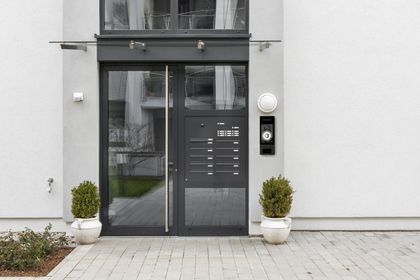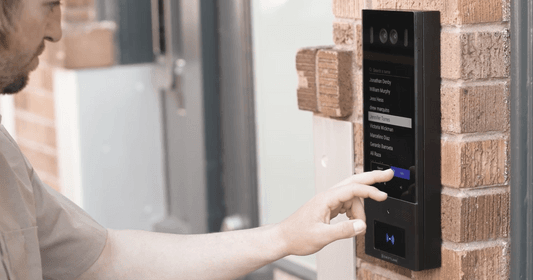What is an intercom system?
An intercom system, short for “intercommunication system,” is a versatile and sophisticated communication tool that enables audio or video transmission between two or more devices. These systems facilitate communication between individuals at separate locations, using a variety of methods such as physical wiring, telephone connections, internet, Wi-Fi, or other wireless means. Intercom systems have found widespread application in a range of settings, including residential buildings, offices, commercial establishments, industrial facilities, and even personal vehicles like motorcycles.
Related Posts:
- Commercial intercom systems – 30 considerations
- Choosing a wireless intercom system
- Best apartment intercom systems
- Apartment Intercoms – Buyer Considerations
- Compare business/office intercom systems
- Best Telephone Entry Systems
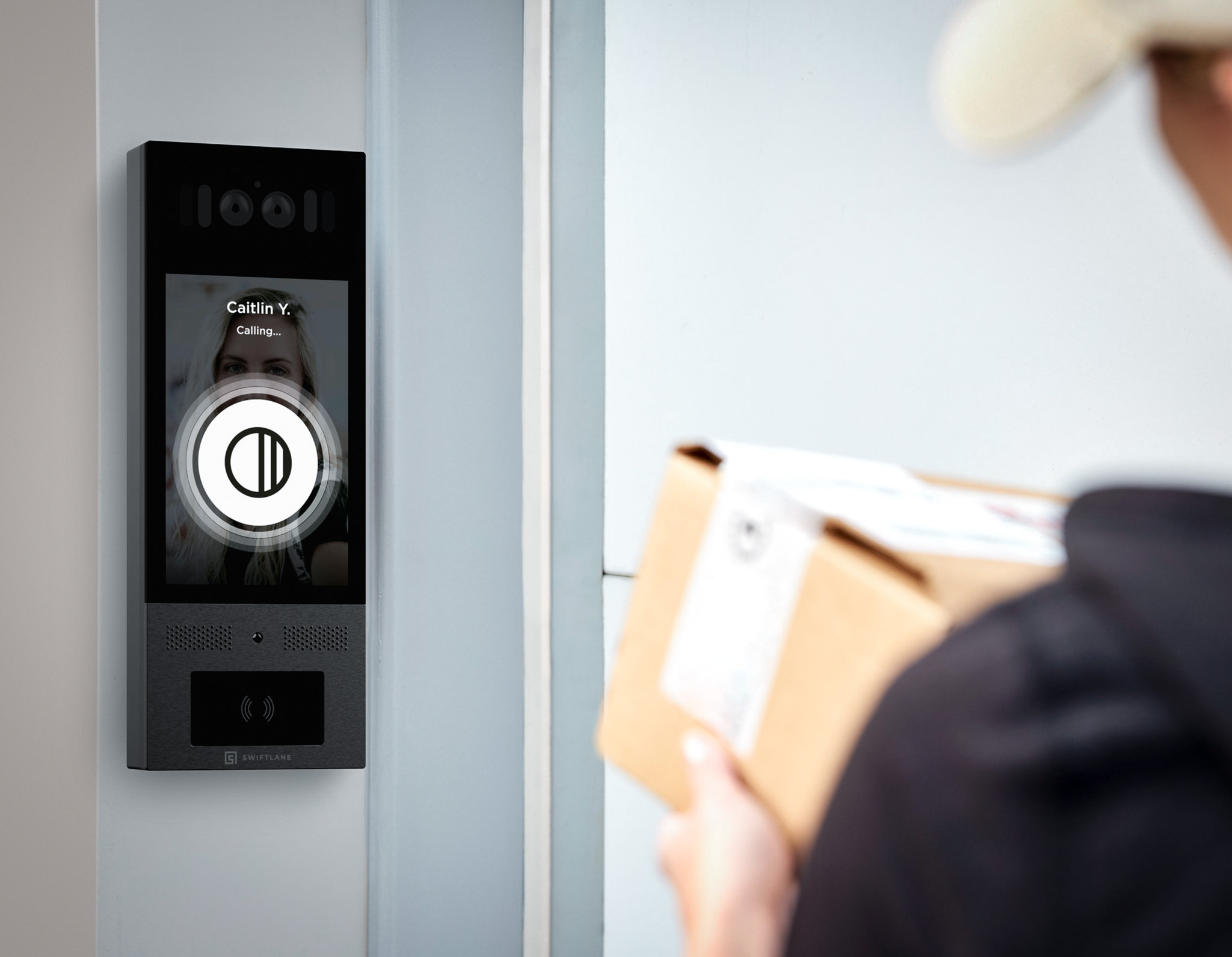
In today’s fast-paced and technologically advanced world, intercom systems have become increasingly essential for maintaining security, enhancing convenience, and improving communication. They offer a wide array of features and functions, ensuring that users can tailor their experience to their specific needs and preferences.
Some key aspects of modern intercom systems include:
- Audio and Video Capabilities: Advanced intercom systems offer not only audio communication but also real-time video transmission. This added feature enhances security and allows users to visually verify the identity of a visitor before granting access to the premises.
- Integration with Smart Devices: Many intercom systems now seamlessly integrate with smartphones, tablets, or other smart devices, enabling users to receive notifications, remotely view live video feeds, and control access to their property from virtually anywhere in the world.
- User-friendly Interface: Contemporary intercom systems prioritize user experience, offering intuitive interfaces that are easy to navigate and operate. These systems also cater to various accessibility needs, ensuring that everyone can benefit from their use.
- Scalability and Flexibility: Modern intercom systems can be easily expanded or upgraded to accommodate the changing needs of a home or business. This adaptability allows for the addition of new devices, the integration of new features, or the expansion of coverage areas.
- Enhanced Security Features: In addition to basic communication functions, intercom systems often come equipped with robust security features such as motion detection, night vision, and facial recognition technology. These advanced capabilities provide an extra layer of protection for users and their properties.
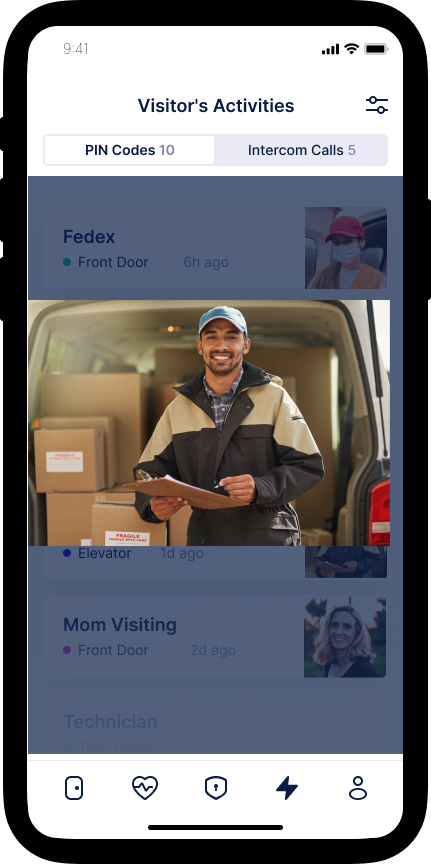
As the world becomes increasingly connected, intercom systems have evolved to keep pace with the demands of modern living. By offering a diverse range of capabilities and functionalities, these systems have transformed the way we communicate, secure our properties, and manage access to our homes and businesses. Whether you’re a homeowner seeking to enhance security, a property manager aiming to streamline communication, or a business owner looking to improve efficiency, intercom systems are a powerful and versatile solution that can cater to your unique needs.
How does an intercom system work?

An intercom system functions as a communication channel between two distinct endpoints, enabling secure and efficient interactions between individuals at separate locations. At its core, an intercom system consists of a transmitter and a receiver. The transmitter can be a stationary device mounted outside a building or a portable, battery-operated unit. On the other hand, the receiver may take the form of a wall-mounted hardware, a specialized intercom receiver device, or even a smartphone or computer.
To better understand the workings of an intercom system, let’s consider an example involving an apartment building. In this scenario, an intercom hardware is placed outside the building near the entry door, which remains locked to ensure that only authorized individuals can gain access. When a visitor or delivery person arrives at the door, they can press a button corresponding to a specific apartment unit. This action sends a signal to notify the resident through a wired or wireless receiver, or directly to their phone.
Upon receiving the notification, the resident can pick up the call and engage in a conversation with the visitor to determine their identity and purpose. Once the resident is satisfied with the visitor’s credentials, they can press a button on their device to remotely unlock the door. This button press transmits a signal back to the intercom system, prompting it to unlock the door.
Modern intercom systems typically include hardware that connects directly to an electronic door lock. This hardware releases power to the door lock, enabling the door to be opened electronically. As technology advances, intercom systems are becoming increasingly sophisticated, incorporating features such as video capabilities, integration with smart devices, and enhanced security measures.
Types of Intercom Systems
There are many types of intercom systems including wired intercoms, Wireless intercoms, telephone intercoms, video intercom systems, gate intercom systems, room to room intercom systems and many more. see the details below:
In today’s fast-paced world, ensuring the safety and security of your home or building has become more critical than ever. Intercom systems play a crucial role in providing convenient and secure access to your property. Whether you are a homeowner or a property manager, understanding the different types of intercom systems is essential in selecting the perfect solution for your needs. In this guide, we’ll dive deep into the world of intercom systems, exploring various types, their features, and offering advice on what to look for when making your decision.
Wired Intercom Systems
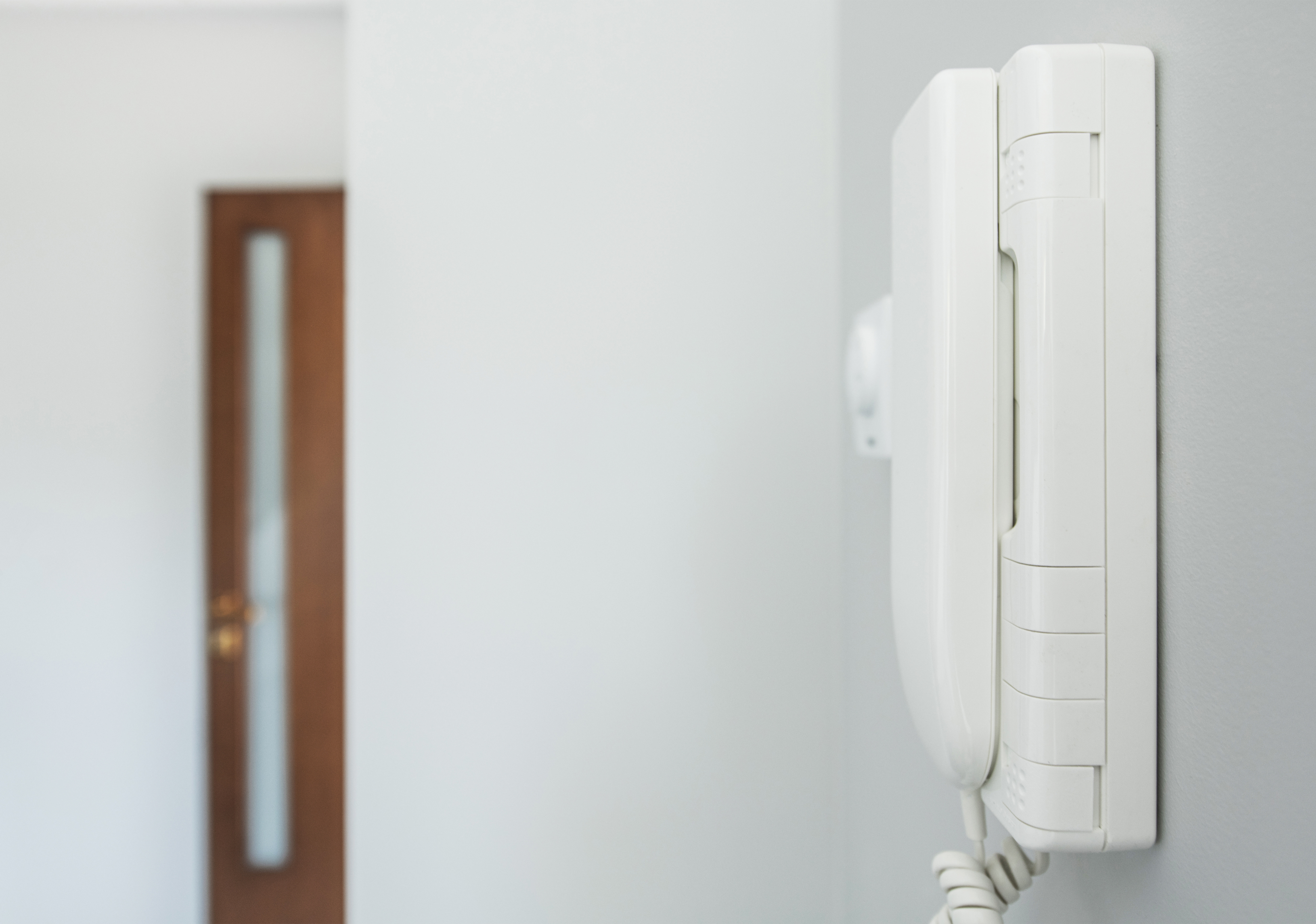
Wired intercom systems, as the name suggests, require a wired connection between the transmitter and the receiver. They can have a single receiver and transmitter in a single-family home or connect the front door entry system to every individual unit receiver in a multi-tenant apartment building through a wired connection.
Pros:
- Reliable and secure communication
- No monthly costs
- Minimal upkeep once installed
Cons:
- High installation and maintenance costs
- Limited remote access and control
- Inflexible and not easily scalable
Wired intercom systems are suitable for those looking for a stable and secure communication channel without monthly fees. However, if flexibility and remote access are your priorities, you might want to consider other options.
Wireless Intercom Systems

Wireless intercom systems do not require a hard wire between the devices communicating with each other. Instead, they use Wi-Fi, telephone line connections, internet connections, or local 2.4 GHz frequency setups between the receiver and transmitter stations.
Pros:
- Easy installation and scalability
- Remote access and control
- Lower installation costs compared to wired systems
Cons:
- Dependent on a stable wireless connection
- May require monthly fees for certain features
- Potential for interference or signal disruptions
Wireless intercom systems are an excellent choice for people seeking a more flexible and easily scalable solution. Keep in mind that a stable wireless connection is crucial, and additional costs may be incurred for certain features.
Telephone Intercom Systems
Telephone intercom systems use landline connections to make phone calls wirelessly between the resident and the visitor, providing a significant improvement in efficiency compared to wired intercom systems. They have been popular over the last 20 years due to their reduced construction and maintenance costs.
Pros:
- No need to wire the receiving device into every unit
- Can receive calls from visitors even when not at home
- Lower construction and maintenance costs
Cons:
- Dependent on landline availability
- Limited to audio communication
- Landline costs may increase over time
If you prefer a cost-effective solution without the need for video communication, telephone intercom systems might be the right choice for you. However, as landline costs increase and availability decreases, you may want to explore other options.
Video Intercom Systems
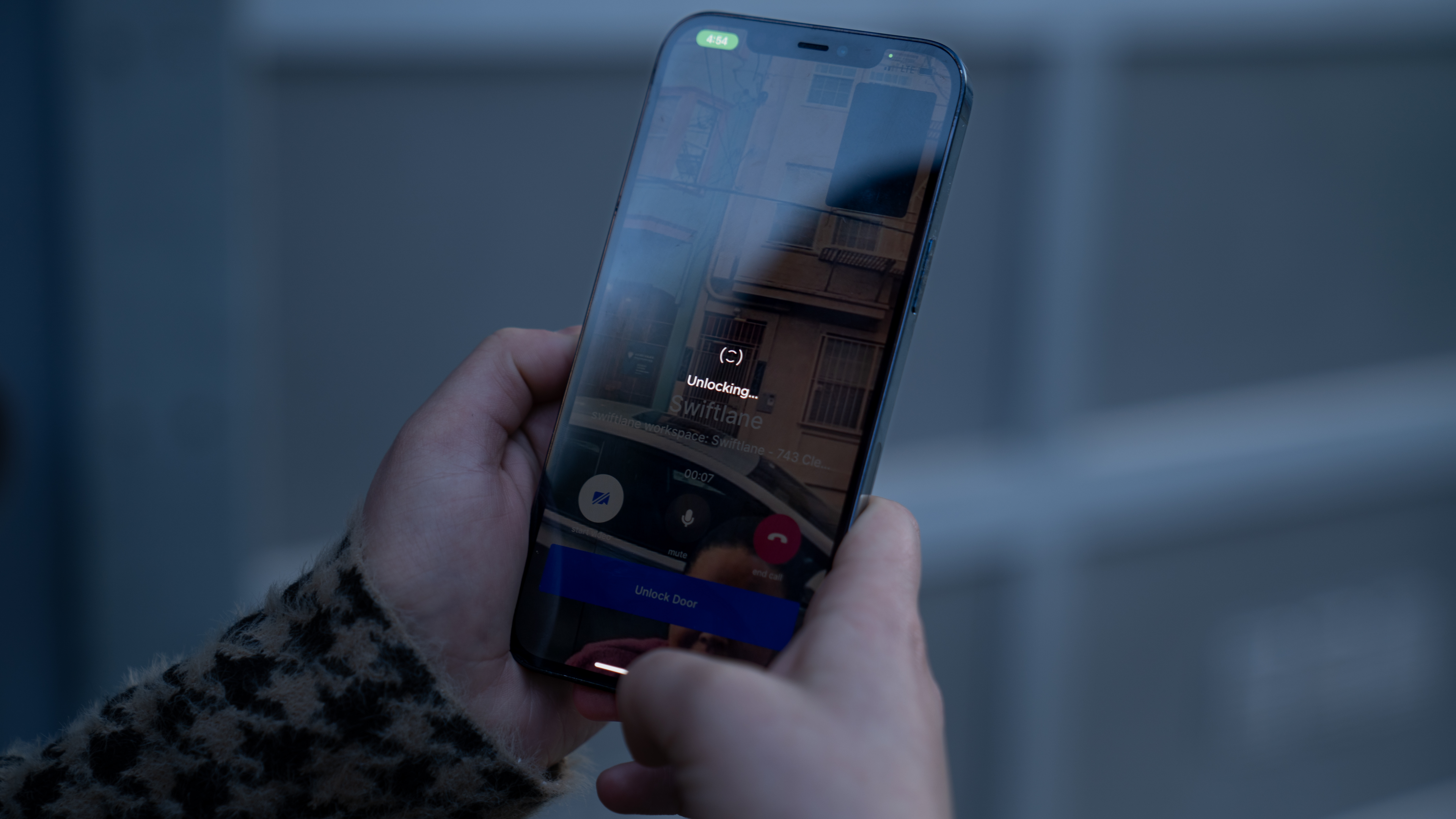
Video intercom systems provide audio and video communication between the visitor and the building resident. They can be wired or wireless, with single-family homes often utilizing a wired intercom and multifamily or apartment buildings opting for wireless video intercom systems.
Pros:
- Enhanced security with video communication
- Can utilize mobile apps for remote access
- VoIP-based audio calling available for non-smartphone users
Cons:
- May require a stable internet connection
- Additional costs for video capabilities
- Privacy concerns due to video surveillance
Video intercom systems are ideal for those seeking increased security through video communication. Ensure you have a stable internet connection and consider any privacy concerns before opting for this solution.
Gate Intercom Systems
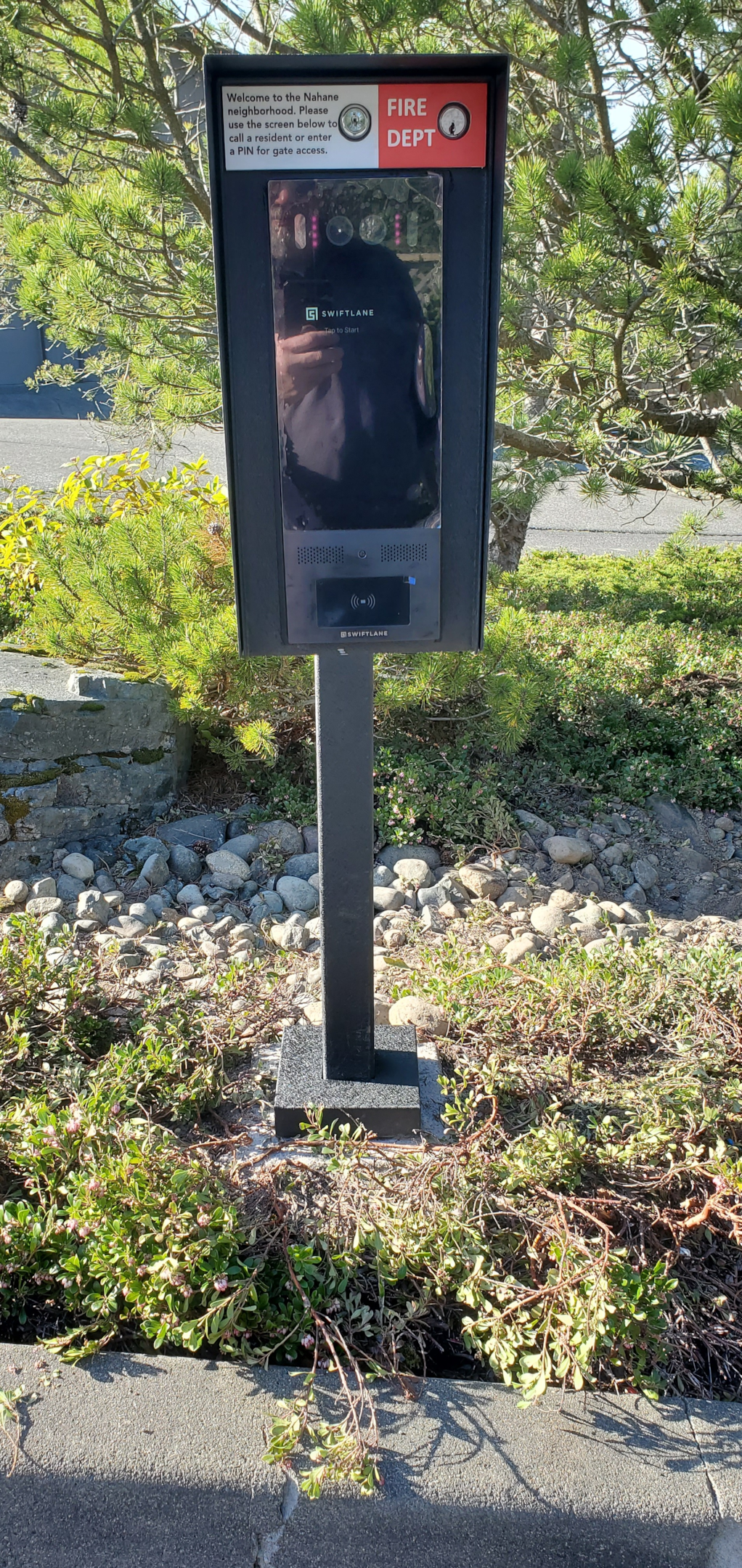
Gate intercom systems are designed for pedestrian and vehicle gates to manage visitor access. They can be telephone or video-based or use a wired system. Gate intercom systems connect to the vehicle gate motor instead of a door lock, providing secure access to gated communities or campuses.
Pros:
- Suitable for managing visitor access at gates
- Can be telephone or video-based for added convenience
- Works with gate motors for seamless integration
Cons:
- May require additional installation steps
- Limited to controlling entry, not exit
- Dependent on the chosen system (wired, telephone, or video)
Gate intercom systems are perfect for properties with vehicle or pedestrian gates, offering convenient and secure access management. Keep in mind that you’ll need to choose between wired, telephone, or video-based systems, each with its pros and cons.
Intercom Systems by Application
Intercom systems have become a crucial part of our daily lives, providing communication, convenience, and security in various settings. Let’s explore the different types of intercom systems based on their application, benefits, and features.
Home Doorbells

Imagine coming home after a long day and finding a missed delivery notice on your door. With home doorbell intercom systems, like Ring and Nest, you can avoid this frustration. These doorbell intercoms can be easily mounted wirelessly in front of a single-family home, providing seamless communication between a visitor and a resident.
Using Wi-Fi connectivity, the system sends notifications to your phone, allowing you to talk to visitors and receive alerts about package deliveries. Most home intercom systems are moving towards Wi-Fi connected doorbells that can be installed in just a few minutes by anyone. With a built-in battery lasting several months, these doorbells offer an affordable, wireless option for homeowners.
*Please note that single-family home doorbells typically do not connect to electronic door locks, so you will need to unlock the door manually.
Features:
- Wireless installation
- Wi-Fi connectivity
- Battery-powered
- Video and audio communication
Room-to-Room Intercom

In large homes or buildings, it can be challenging to communicate with family members or colleagues in different rooms. Room-to-room intercom systemsoffer a solution, providing seamless communication between various areas of the space.
These systems can be wired or wireless, depending on the user’s preference, and are perfect for large homes, offices, or facilities where direct communication between rooms is essential.
Features:
- Wired or wireless connectivity
- Audio communication
- Multiple channels
- Easy installation
Apartment Intercom Systems
Apartment dwellers understand the importance of having a visitor intercom to manage guests and deliveries. Most apartment buildings require two levels of door access: one for the main entry point and another for individual units.
Landlords and property managers typically install multi-tenant intercom systems at the apartment’s main entry. These systems can display tenant information on a row of buttons or through a touch screen interface. Once a visitor selects a resident, they can make a phone or video intercom call to the resident’s phone. Apartment intercom systems can also connect to electronic door locks, allowing for remote door release.
Types:
- Wired apartment intercoms
- Telephone apartment intercoms
- Video intercoms for apartments
Office Intercom Systems
Imagine you’re a receptionist at a busy office building, and you need to manage clients, visitors, and package deliveries efficiently. Office intercom systems can help streamline this process, providing communication across buildings and handling package deliveries at loading docks.
Offices may also utilize gate intercom systems for vehicle entry and visitor communication. These intercom systems can be integrated with access control systems for added security.
Features:
- Wired or wireless connectivity
- Video and audio communication
- Integration with access control systems
- Multiple channels for building-wide announcements
Gate Intercom Systems
For properties with gated entrances, gate intercom systems offer an additional layer of security. These systems allow residents or staff to communicate with visitors and grant access remotely. Gate intercom systems are available in various forms, including wired, wireless, and cellular options, ensuring a solution for every security need.
Features:
- Wired, wireless, or cellular connectivity
- Video and audio communication
- Remote access control
- Integration with existing security systems
Multi-Tenant Commercial Building Intercom Systems
Multi-tenant commercial buildings require robust intercom systems to manage communication and security for numerous businesses. These systems often feature a directory for easy visitor navigation and can integrate with other security measures like surveillance cameras and access control systems.
Features:
- Directory for visitor navigation
- Wired or wireless connectivity
- Video and audio communication
- Integration with existing security systems
Industrial Intercom Systems
In factories, warehouses, and manufacturing facilities, industrial intercom systems cater to the unique communication needs of staff working in harsh environments. These commercial video intercom systems provide reliable communication to ensure that operations run smoothly and safely.
Features:
- Rugged design for harsh environments
- Wired or wireless connectivity
- Video and audio communication
- Integration with existing security and communication systems
School Intercom Systems
Effective communication is vital in schools for day-to-day operations, emergency announcements, and visitor management. School intercom systems often feature paging capabilities, enabling administrators to make school-wide announcements or communicate with specific classrooms.
Features:
- Wired or wireless connectivity
- Audio communication and paging
- Emergency alert functionality
- Integration with other school communication systems
Motorcycle Intercom Systems
Picture yourself riding a motorcycle with a passenger or friends and wanting to chat without stopping. Motorcycle intercom systems allow riders to communicate with passengers or other riders while on the road. These systems typically feature Bluetooth connectivity and noise-canceling technology for clear audio even at high speeds.
Features:
- Bluetooth connectivity
- Noise-canceling technology
- Intercom functionality for rider-to-rider communication
- Integration with smartphones for music, GPS, and phone calls
Commercial vs. Residential Intercom Systems
When choosing an intercom system, it’s essential to consider whether it will be used in a commercial or residential setting. Each type of environment has unique requirements and challenges that influence the choice of intercom system. In this section, we will discuss the key differences between commercial and residential intercom systems, what to look for in each of them, and the various types of commercial intercom systems offer available.
Commercial Intercom Systems
Commercial intercom systems are designed to handle the communication and security needs of businesses, offices, industrial facilities, and multi-tenant buildings. They often require more robust features and higher levels of security compared to residential systems.
What to look for:
- Integration with access control systems for secure entry
- Video and audio communication for visitor identification
- Multiple channels or zones for building-wide communication
- Compatibility with existing security systems, such as surveillance cameras
- User-friendly interface for easy visitor navigation
- Scalability to accommodate future growth or changes in the building layout
Residential Intercom Systems
Residential intercom systems are designed for single-family homes, apartments, and small communities. They focus on providing communication between residents and visitors, as well as promoting convenience and security.
What to look for:
- Ease of installation, with wireless options being popular choices
- Wi-Fi connectivity for remote access and control
- Video and audio communication for visitor identification
- Integration with home automation systems, such as electronic door locks
- User-friendly interface for straightforward operation
Commercial Intercom systems
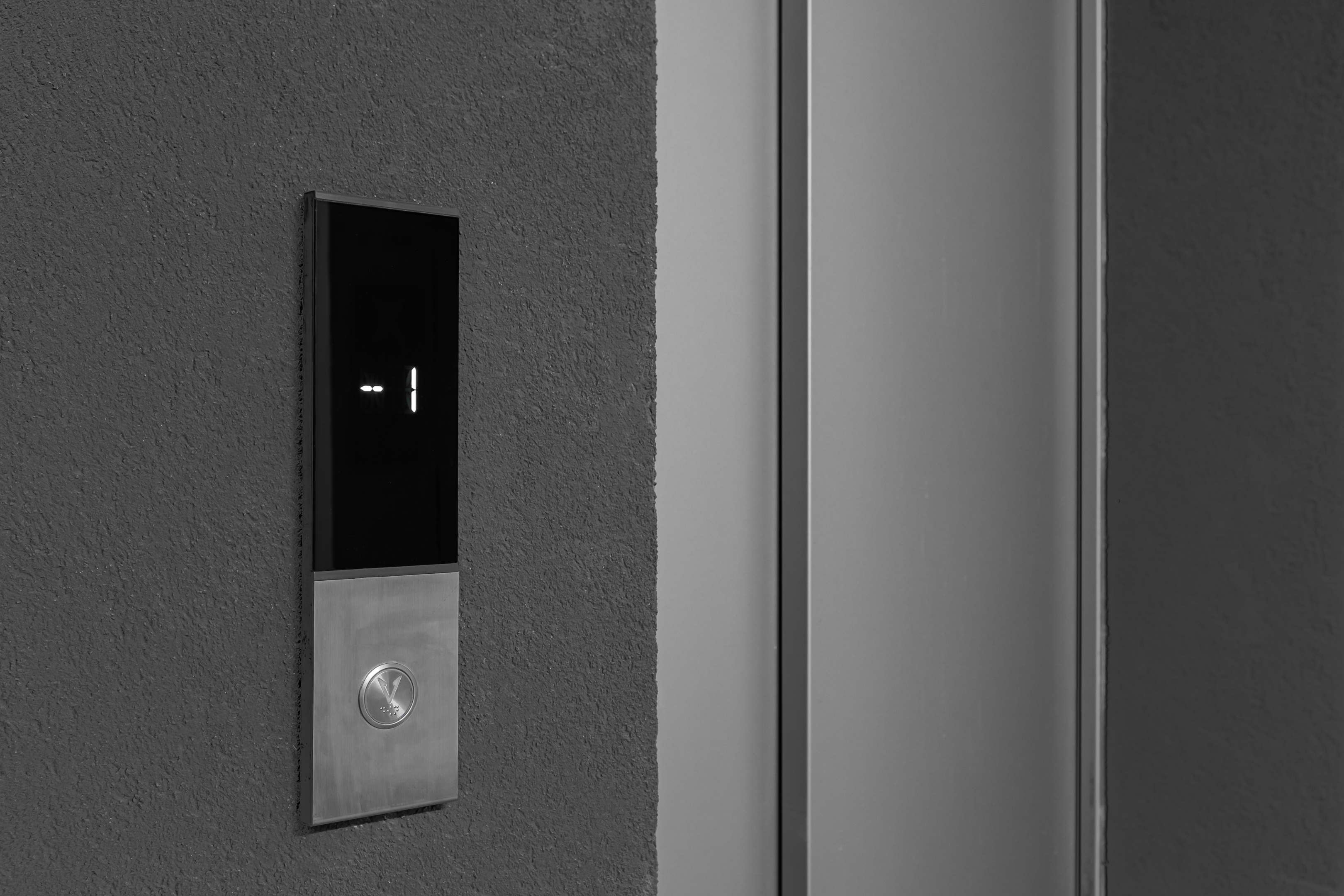
In today’s fast-paced world, communication and security are crucial for commercial spaces. Commercial intercom systems are designed to meet these needs in a variety of environments, including offices, industrial facilities, schools, multi-tenant commercial buildings, and warehouses. In this in-depth guide, we’ll explore what to look for in a commercial intercom and security system, and provide helpful resources to make the best decision for your needs.
Commercial Intercom Systems with Door Release
One of the most sought-after features in commercial intercom systems is the ability to unlock doors by connecting to electronic door lock hardware. These systems typically work with any kind of electronic door lock and are independent of the actual lock hardware. When evaluating a commercial intercom system, consider the following aspects:
- Integration: Can the system integrate with existing building door locks?
- Cost: What is the overall cost for the hardware, software, and installation? Most commercial intercom systems range between $2,000 to $4,000 for hardware, with an additional $2,000 for installation.
- Ease of Installation: Can the system be installed easily without significant expenses for running cables or upgrading the entire building?
Features to Look for in a Commercial Intercom System
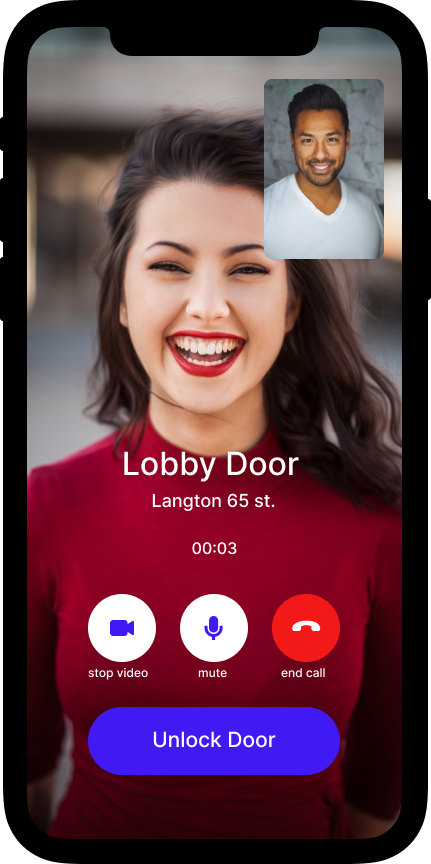
Video and Audio Capabilities
When choosing a commercial intercom system, consider whether it offers video intercom capabilities or audio-only. Additionally, assess whether the system requires wiring to every receiver or if calls can be received wirelessly.
Customization and Scheduling
A versatile commercial intercom system should have the ability to schedule call timing for different employees working in different shifts. It should also allow you to reroute calls to other employees when someone is on vacation, create schedules for various employees, and provide fallback calling in case the first person is busy.
Compatibility with Devices
Consider whether the system requires a dedicated receiving base station, or if it can work with existing devices like cell phones, tablets, or computers. It should also be able to receive calls remotely when employees are working from home.
Security and Connectivity
A reliable commercial intercom system should invest in data security and privacy. It should support different types of commercial building entry points, such as gates, turnstiles, loading docks, and vehicle entry gates. Assess whether the commercial video intercom system requires a separate intercom master station or if it can work with existing devices.
Retrofitting and Infrastructure
Find out how easy it is to retrofit your existing system and what infrastructure you’ll need, such as internet connectivity, telephone lines, or wired connections. Ensure the wireless system provides one-way or two-way communication and broadcasting capabilities.
Customization and Flexibility
A top-notch commercial intercom system should allow you to customize display entries and buttons on the screen, work with various door lock types, handle package delivery, and function during power or internet outages.
Multi-building Communication and Call Routing
When evaluating a commercial intercom system, consider whether you need to manage communication for a single property or multiple buildings located in different regions or areas. The system should be able to call multiple people in parallel, so if one person is busy, the other person can receive the call. Additionally, it should be capable of routing calls to different departments inside the company, such as shipping, security teams, recruiting, and sales teams attending to clients.
Temporary Access
A good commercial intercom system should allow you to generate temporary access for visitors or contractors through temporary PIN codes, virtual keys, and time-restricted entry. This feature ensures that your building remains secure while still allowing necessary access.
Mobile Phone Compatibility
The intercom system should offer compatibility with mobile phones, so people can receive calls remotely using their smartphones. This flexibility is crucial for employees who may be working from home or off-site.
Power Outage and Fallback Mechanisms
In case of a power outage or internet failure, the intercom system should have fallback mechanisms in place, such as the option to use a traditional key for entry. This ensures that your building remains accessible even during unexpected situations.
With these additional points, you should have a comprehensive understanding of the key features and considerations when selecting a commercial intercom system.
Helpful Resources – Commercial Intercom Systems
To help you make the best decision, we’ve provided some useful resources:
- Swiftlane’s Video Intercom System for Commercial Buildings
- 30 Considerations While Buying a Commercial Intercom System
- Review and Comparison of Best Commercial Intercom Systems
- What to Look for in a Wireless Commercial Intercom System
Selecting the best commercial intercom system is a complex process, but armed with this comprehensive guide and these helpful resources, you’re well on your way to making an informed decision.
Apartment Intercom Systems
Resources:
Apartment intercom systems have come a long way, offering not only convenience but also enhanced security and access control. From secure delivery management to frictionless access for staff, these systems are becoming essential for modern apartment living. As technology evolves, many apartment and condo buildings are finding their traditional apartment intercom systems outdated and insufficient for the needs of their residents. Here are some things to consider while upgrading your apartment intercom system.
Why Upgrade Your Apartment Door Buzzer System?
Older door buzzers, often based on telephone lines or wired systems, are becoming less reliable and more expensive to maintain. Modern video intercom systems address concerns about package theft, lack of security features, and the need for remote door unlocking and visitor verification.
Top Features to Look for in a Modern Apartment Video Intercom
- Ditch Telephone Line-Based Systems: Move towards video intercom systems, which are more secure, convenient, and reliable than traditional telephone line-based systems.
- Video Intercom System: Video intercoms provide a secure way to verify visitors and allow residents to communicate with them through their smartphones.
- Full-Blown Calls: Ensure calls come in as full-blown calls instead of push notifications to prevent missed calls from visitors.
- Common Area Internet Connection: Check if the video intercom company offers cell-based plans to save on costs for a common area internet connection.
- Cell Backup: A video intercom system should provide cell backup in case of primary internet failure, ensuring uninterrupted communication with visitors.
- Vandal-Resistant System: Choose hardware that is vandal-resistant, with a high IK rating for vandal protection.
- Fallback to Telephone Line Call: Support residents without smartphones by choosing a system that can fall back to a telephone line call.
- Resident Access Options: Check for access options like face recognition touchless access and mobile app door opening.
- Integration with Amazon Key for Business and USPS Key-boxes: Ensure easy integration with existing access systems for deliveries.
- Compatibility with Existing Key Fob System: The new system should work seamlessly with the current key fob system.
- Call Multiple Tenants in Parallel: The system should allow calling multiple tenants simultaneously.
- Reverse Intercom Calls: Look for a system that allows residents to call back a visitor if they missed the initial call.
- Aesthetics: Choose a system that looks good and integrates seamlessly with your building’s design.
- Display Name Customization: Ensure the system allows easy customization of display names for residents.
- Food and Grocery Delivery: The system should provide a secure way of receiving food and grocery deliveries without compromising building security.
- Remote Management: Choose a system that can be managed remotely from any web browser.
- Over the Air Updates: Ensure the system can receive new software features remotely without additional licensing costs.
- Integration with Apartment Property Management Systems: Look for a system that integrates with property management systems for easy access management.
- Data Security: The system should follow the latest encryption and secure data storage practices to protect residents’ personal data.
How much does an intercom cost?
A video doorbell intercom for homes costs between $200 to $350. compared to that commercial intercom Hardware costs between $2,000 to $6,000 and can support multiple tenant entries and connect to door hardware so it can release the door lock as well. they’re more expensive because they require hardwired connection to the door hardware and release the door lock.
Upgrade Your Building Security
Get in touch with a Swiftlane specialist for more information on the best access control and video intercom solution for your building.

